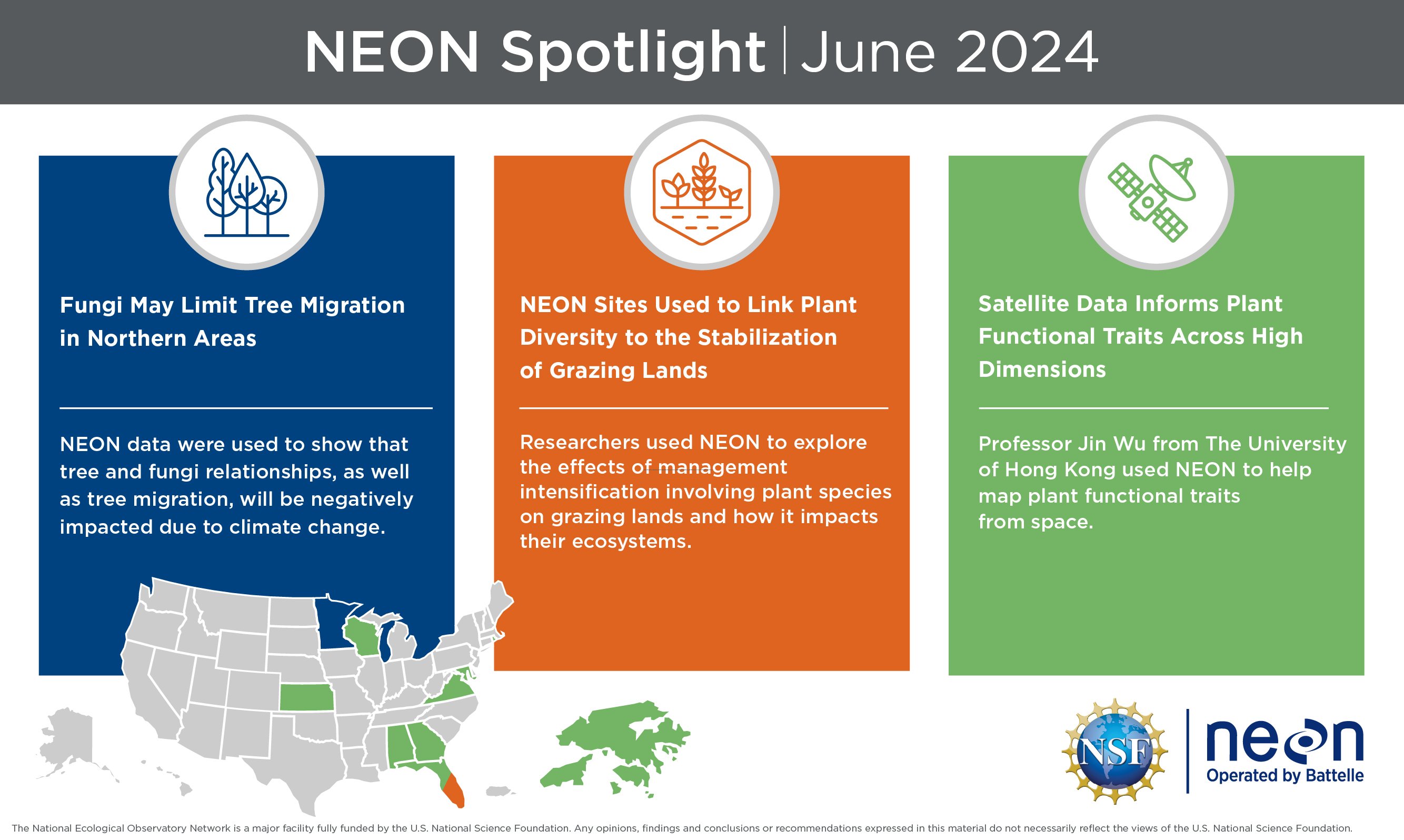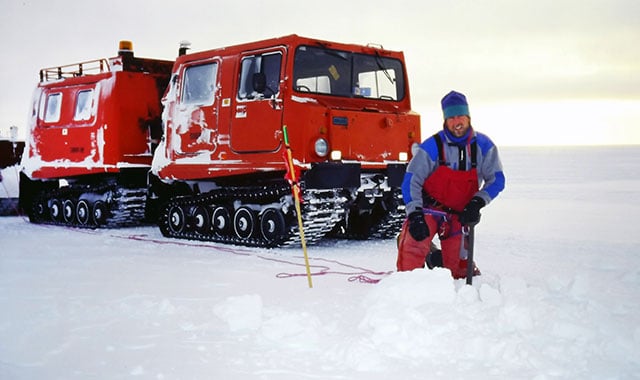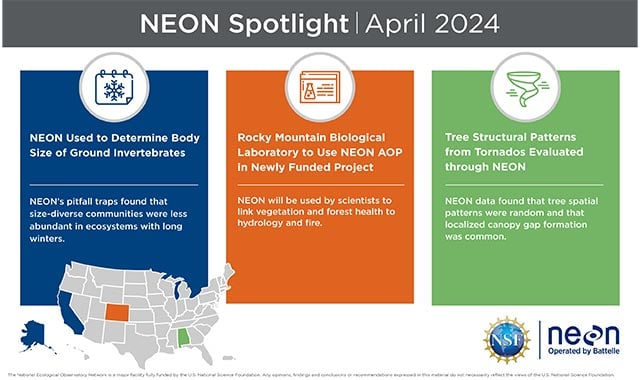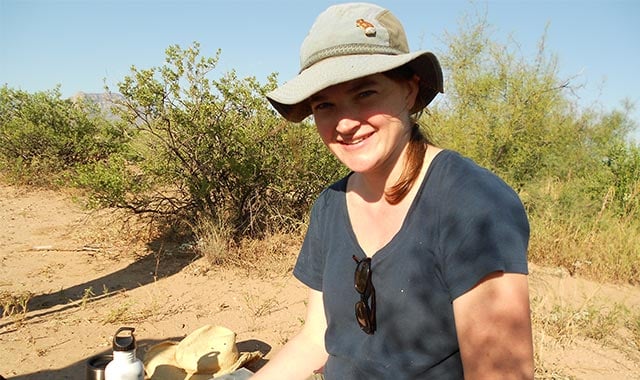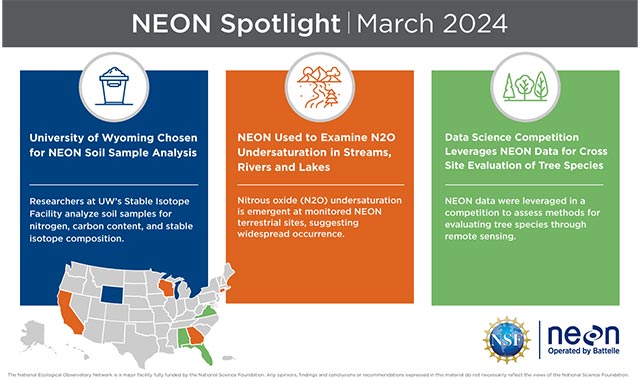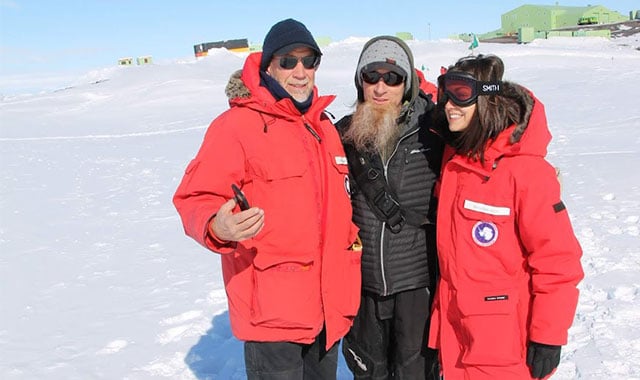February 2022: What’s New with NEON?
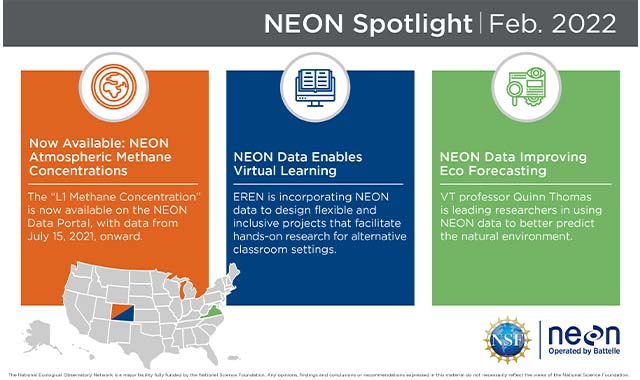
February’s collection of scientific advances includes the addition of methane concentration to NEON’s data portal, how NEON data is playing a role in training the next generation of ecological forecasters at Virginia Tech, and how a NEON collaboration provided biology and ecology students with hands-on learning regardless of if they are in-person or remote.
This Month’s Spotlight
The latest news from NEON includes:
- Atmospheric methane concentrations may be significantly lower than carbon dioxide, but methane may deliver more than 80 times the global warming potential of CO2 over a 20-year span. Knowing how much methane is in the atmosphere—and how that concentration is changing over time—is essential to understanding and accurately predicting climate change. As a result, the “L1 Methane Concentration” has been added to the NEON Data Portal, with data from July 15, 2021, onward now available. “We never make changes to our science design lightly, but adding methane was really a no-brainer,” said Dr. Mike SanClements, the lead for the Terrestrial Instrument Systems. “It came directly out of requests from our user community and the Technical Working Groups. And adding methane to our data products does not require the addition of any new instrumentation.”
- Virginia Tech associate professor Quinn Thomas is training a new generation of researchers to develop ecological forecasts. He is the lead investigator for a National Science Foundation grant aimed at using NEON data to improve ecological forecasting. His end goal is to be able to predict the natural environment just like we forecast the weather. "Through grassroots, community-driven decision-making process, our Ecological Forecasting Initiative settled on five themes to examine: tick abundance, beetle community richness, carbon storage, water quality, and the timing of leaf colors in the spring and fall," said Thomas. "We’re asking teams to contribute forecasts from different sites across the U.S. to help grow the field. So far, we’ve had 15 different teams submit 1,500 unique forecasts."
- The ongoing pandemic has deeply impacted higher education, especially field-based biology and ecology courses where instructors and students work collaboratively to collect data hands-on. NEON collaborated with faculty from the Ecological Research as Education Network (EREN) to design five flexible and inclusive learning projects instructors can use to facilitate hands-on learning regardless of if students are in-person or remote. The five projects incorporated the Ecological Society of America’s 4DEE framework and included field data collection, data analysis components, and an activity that incorporates existing NEON field protocols or datasets.
Sponsored by the National Science Foundation (NSF) and operated by Battelle, NEON is a continental-scale ecological observatory network dedicated to providing high-quality, consistently generated, standardized data that is free and available to all users. By enabling scientists, researchers, and students to address critical questions and understand ecosystem changes over time, the NEON program allows the ecological community to tackle questions and problems at a scale that was not possible before.
You can read about the latest work and research in the NEON Spotlight every month at Inside Battelle, and on our social media channels. For more information about NEON, visit NEONscience.org.
Related Blogs
BATTELLE UPDATES
Receive updates from Battelle for an all-access pass to the incredible work of Battelle researchers.
